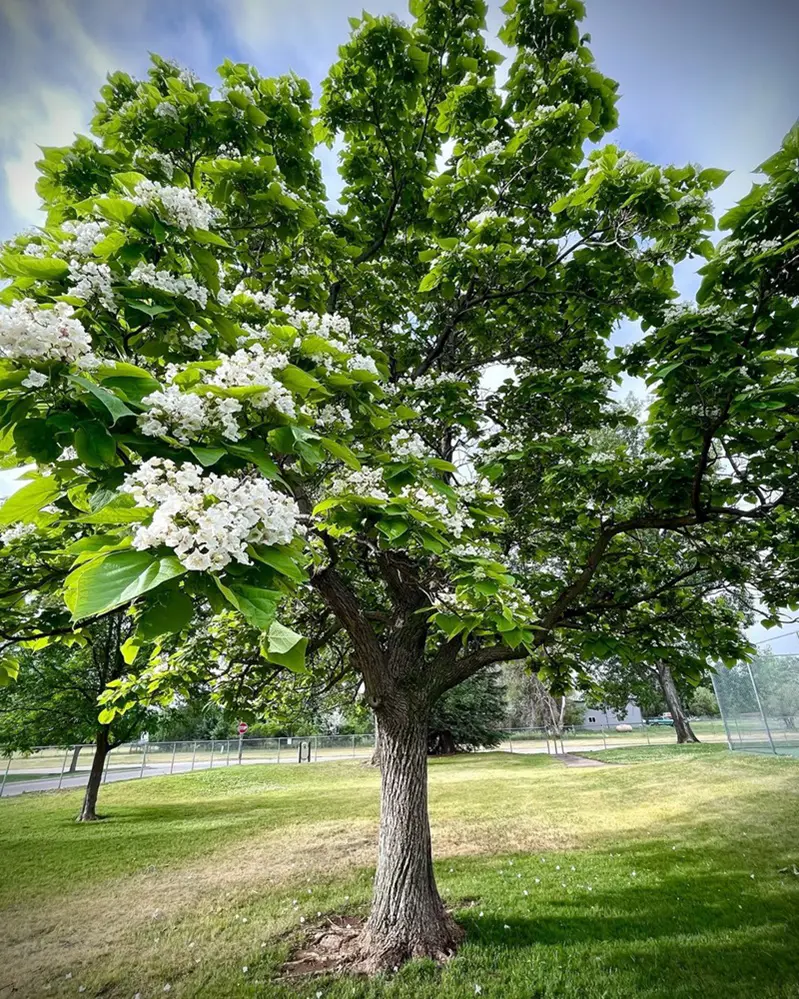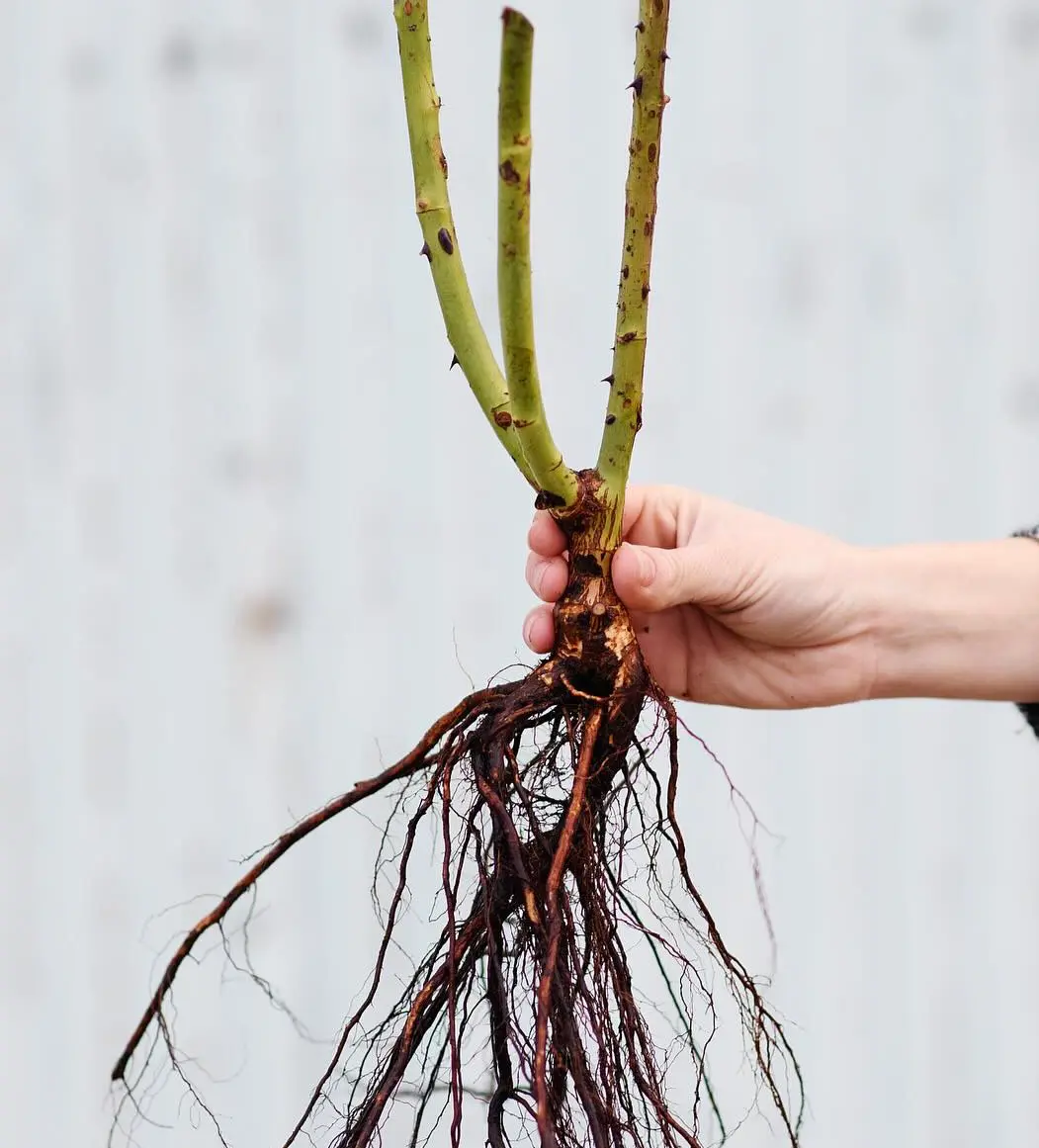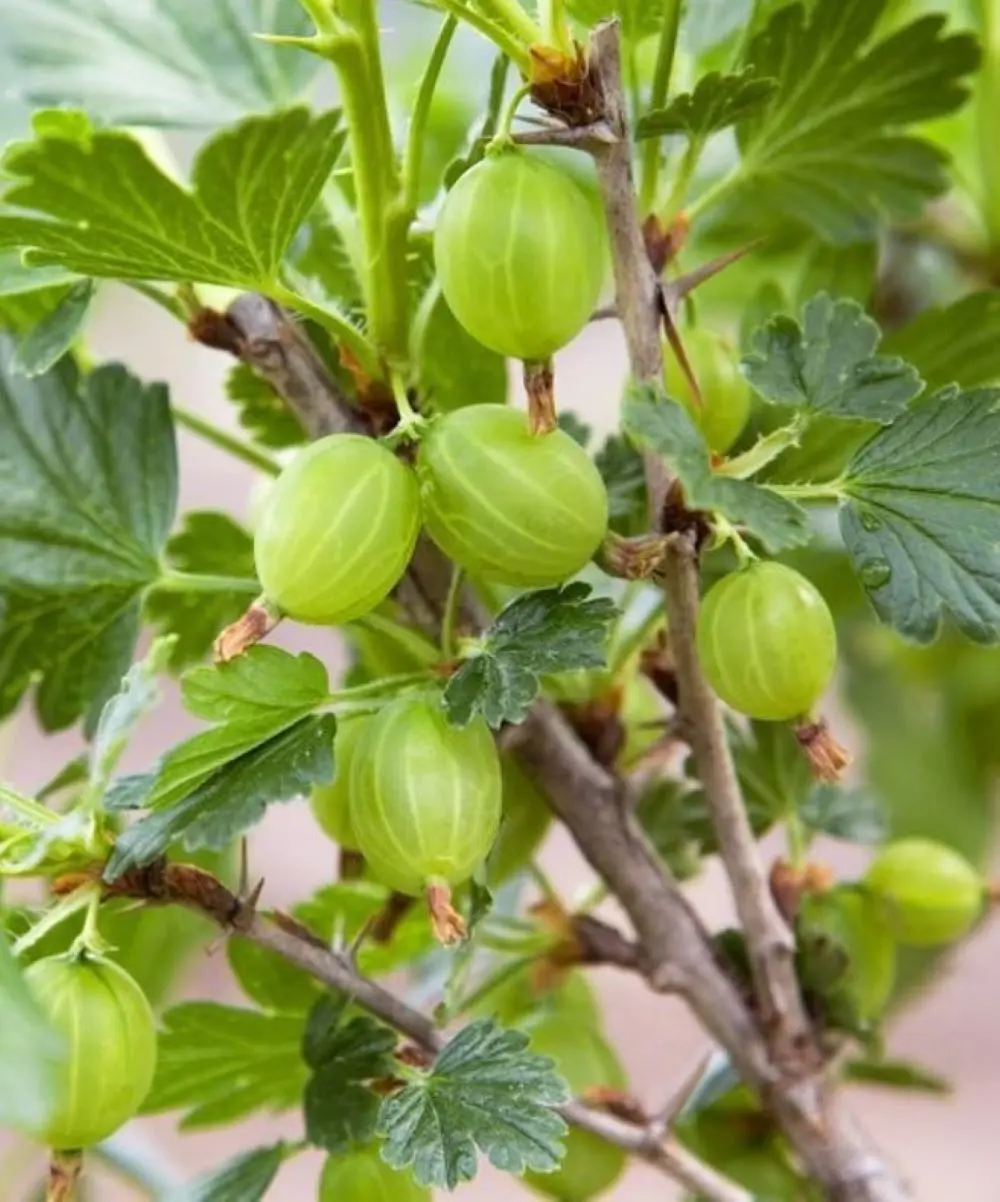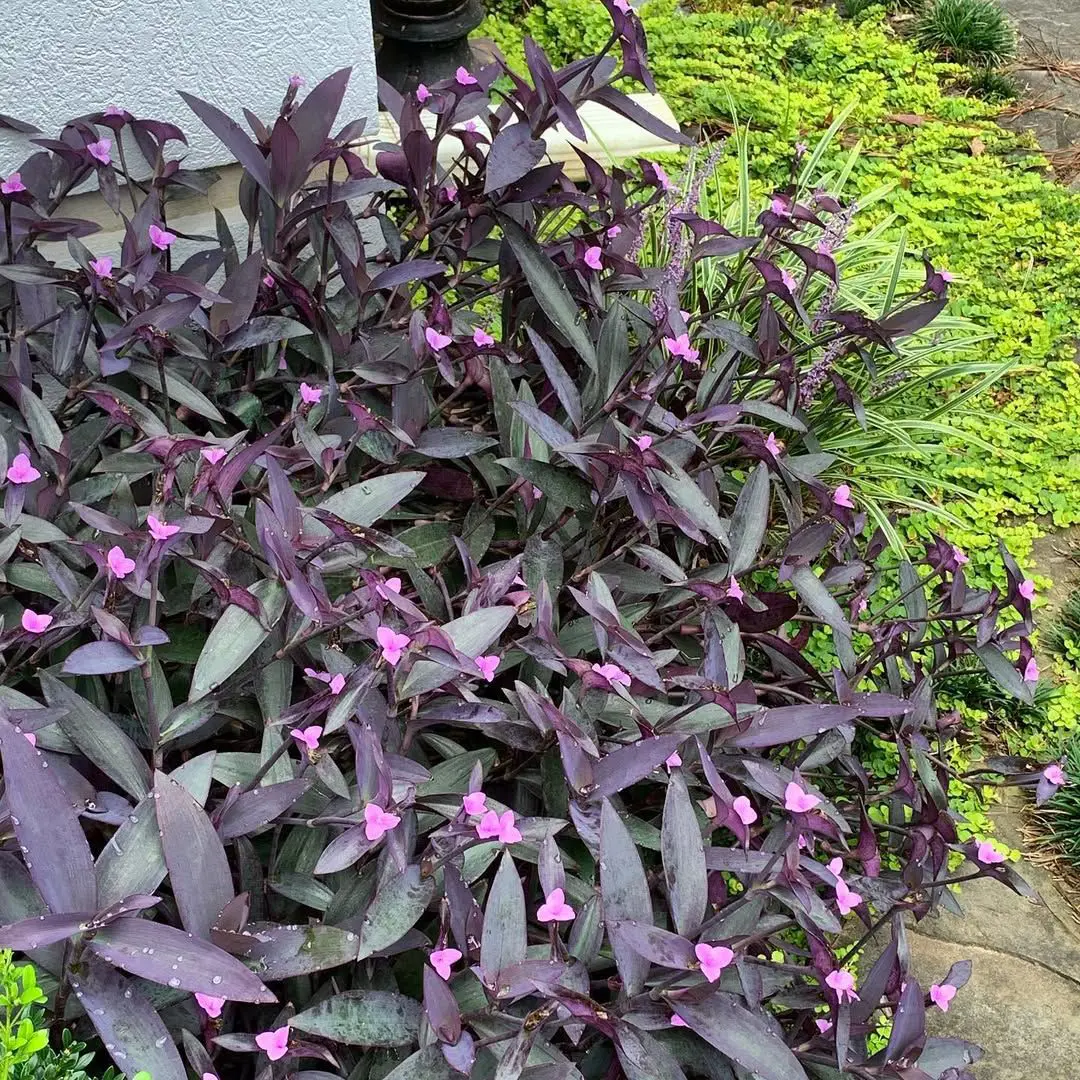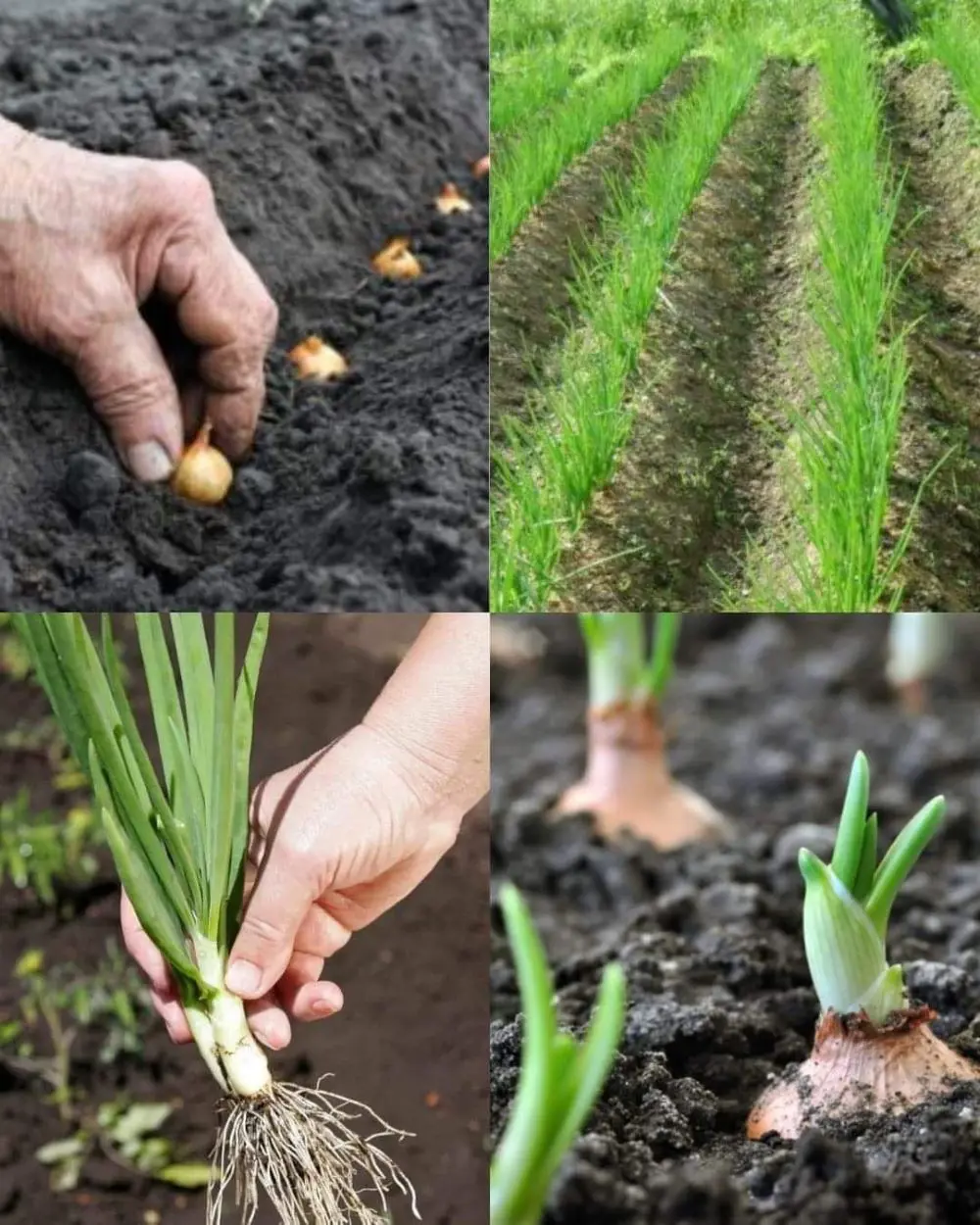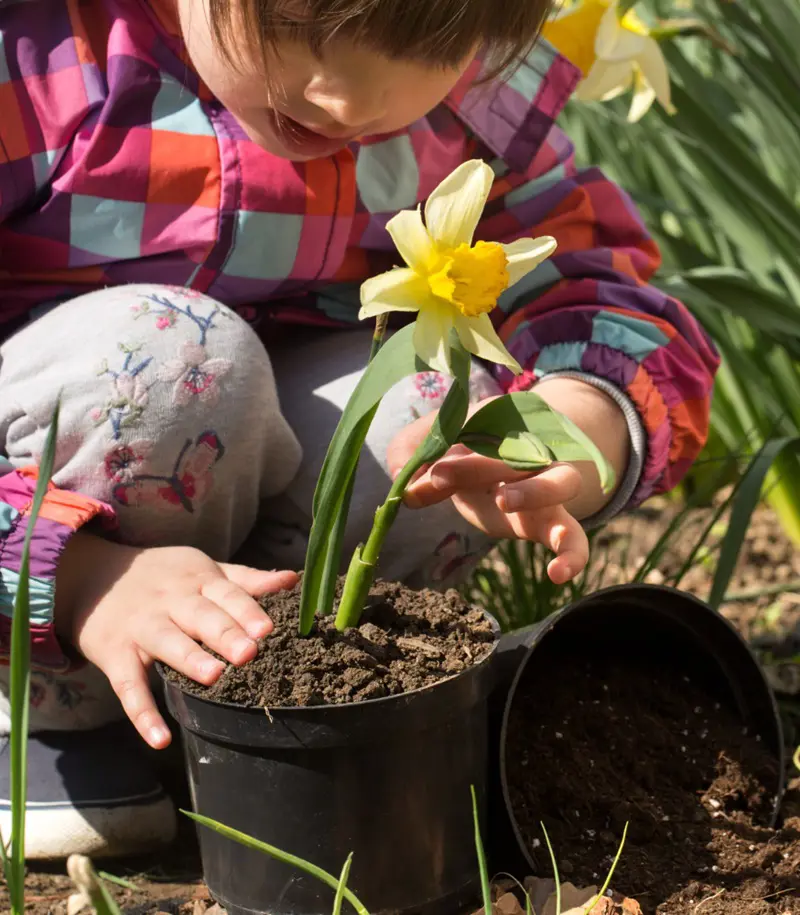Catalpa trees, known for their large, heart-shaped leaves and striking white flowers, are a beautiful addition to any garden or landscape. Catalpa trees belong to the genus Catalpa and are part of the Bignoniaceae family.
Native to North America, they are highly valued for their shade, ornamental beauty, and unique characteristics. This comprehensive guide will walk you through everything you need to know about planting, growing, and caring for Catalpa trees.
Key Characteristics Of Catalpa Trees
- Leaves: Large, heart-shaped, and deciduous.
- Flowers: Showy, white, trumpet-shaped flowers with purple and yellow markings, blooming in late spring to early summer.
- Seed Pods: Long, slender, bean-like pods that hang from the tree, often persisting through winter.
- Size: Mature trees can reach heights of 40-70 feet with a spread of 20-50 feet, depending on the species and growing conditions.
Catalpa trees are known for their rapid growth, resilience, and ability to thrive in a variety of soil types. They are also a favorite among beekeepers due to their nectar-rich flowers.
Planting Catalpa Trees
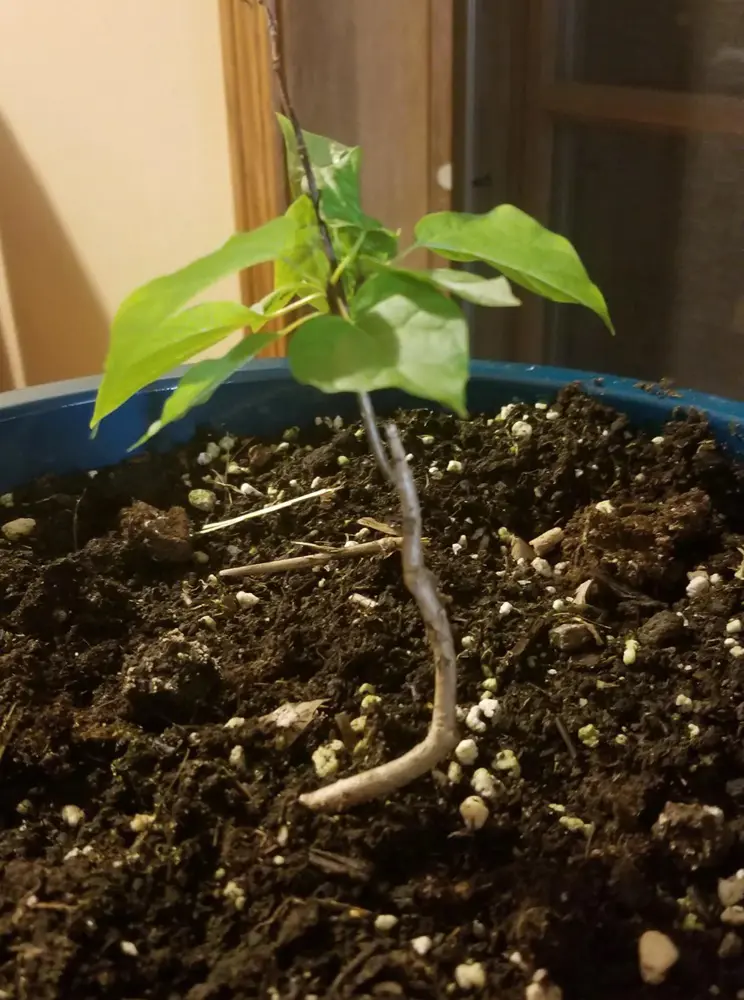
Choosing the Right Location
Catalpa trees prefer full sun to partial shade and thrive in well-drained soil. When selecting a planting site, consider the following factors:
- Space: Ensure there is ample space for the tree to grow both vertically and horizontally.
- Soil: Catalpas are adaptable to different soil types, including clay, loam, and sandy soils. However, they prefer slightly acidic to neutral pH levels (6.0-7.0).
- Drainage: Good drainage is crucial to prevent root rot. Avoid planting in areas where water tends to pool after rain.
Planting Process
- Timing: The best time to plant a Catalpa tree is in the early spring or fall when the tree is dormant and temperatures are mild.
- Digging the Hole: Dig a hole that is twice as wide and just as deep as the root ball of the tree. This allows the roots to spread out easily.
- Preparing the Soil: Mix the excavated soil with compost or organic matter to enhance nutrient content and improve drainage.
- Planting the Tree:
- Place the tree in the center of the hole, ensuring that the root collar (the point where the roots meet the trunk) is level with or slightly above the ground surface.
- Backfill the hole with the prepared soil, gently tamping it down to eliminate air pockets.
- Water thoroughly to settle the soil around the roots.
- Mulching: Apply a 2-3 inch layer of mulch around the base of the tree, extending to the drip line. This helps retain moisture, regulate soil temperature, and prevent weed competition. Keep the mulch away from the trunk to prevent rot.
Growing Catalpa Trees
Watering
- Initial Period: Newly planted Catalpa trees require regular watering to establish a strong root system. Water deeply once or twice a week, depending on weather conditions.
- Established Trees: Once established, Catalpa trees are relatively drought-tolerant. However, during prolonged dry spells, supplemental watering may be necessary to maintain tree health and vigor.
Fertilizing
Catalpa trees generally do not require heavy fertilization. However, providing nutrients can support growth and flowering:
- Young Trees: Apply a balanced, slow-release fertilizer in early spring during the first few years after planting.
- Mature Trees: Fertilize established trees every 2-3 years with a balanced fertilizer or compost to replenish soil nutrients.
Pruning
Pruning is essential for maintaining the tree’s shape, removing dead or diseased branches, and encouraging healthy growth:
- Timing: The best time to prune Catalpa trees is in late winter or early spring before new growth begins.
- Technique: Remove dead, damaged, or crossing branches. Thin out crowded areas to improve air circulation and light penetration.
- Shaping: Catalpas naturally develop an attractive shape, but light shaping can help direct growth and maintain balance.
Pests and Diseases of Catalpa Trees
Catalpa trees (Catalpa spp.) are known for their resilience and tolerance to various environmental conditions, making them a popular choice for ornamental landscaping. However, they are not entirely immune to pests and diseases. Here are some common issues to watch for and effective management strategies:
Catalpa Sphinx Moth
- Symptoms: The larvae of the Catalpa sphinx moth (Ceratomia catalpae) are voracious feeders that can defoliate trees if present in large numbers. These caterpillars are green with black markings and can strip leaves off a tree quickly.
- Solution: To manage these larvae, handpick them from the tree and dispose of them. For larger infestations, use a biological control such as Bacillus thuringiensis (Bt), a naturally occurring bacterium that is safe for humans, animals, and beneficial insects but effective against caterpillar pests. Apply Bt according to the label instructions, focusing on areas where larvae are feeding.
Powdery Mildew
- Symptoms: Powdery mildew is a fungal disease that appears as a white, powdery coating on the surfaces of leaves, stems, and buds. It thrives in warm, dry conditions and can cause leaves to yellow and drop prematurely.
- Solution: To manage powdery mildew, promote good air circulation around the tree by pruning any overcrowded branches. Remove and dispose of any affected leaves to reduce the spread of the fungus. Fungicides labeled for powdery mildew can be used in severe cases, but cultural practices are often sufficient to control this disease.
Leaf Spot
- Symptoms: Leaf spot diseases, caused by various fungal pathogens, result in small, dark lesions on the leaves, which can lead to premature leaf drop. Infected leaves may show a range of symptoms from small spots to large, necrotic areas.
- Solution: To prevent and manage leaf spot, rake and dispose of fallen leaves in the autumn to remove potential sources of infection. Avoid overhead watering to keep foliage dry. If leaf spot becomes a significant problem, fungicides may be applied early in the growing season as a preventive measure.
General Prevention Tips
- Proper Planting: Ensure your catalpa tree is planted in well-draining soil and in a location where it can receive adequate sunlight and air circulation.
- Regular Monitoring: Regularly inspect your catalpa tree for any signs of pests or disease. Early detection is key to effective management.
- Sanitation: Keep the area around the tree clean and free of fallen leaves and debris to minimize disease pressure.
Caring for Catalpa Trees
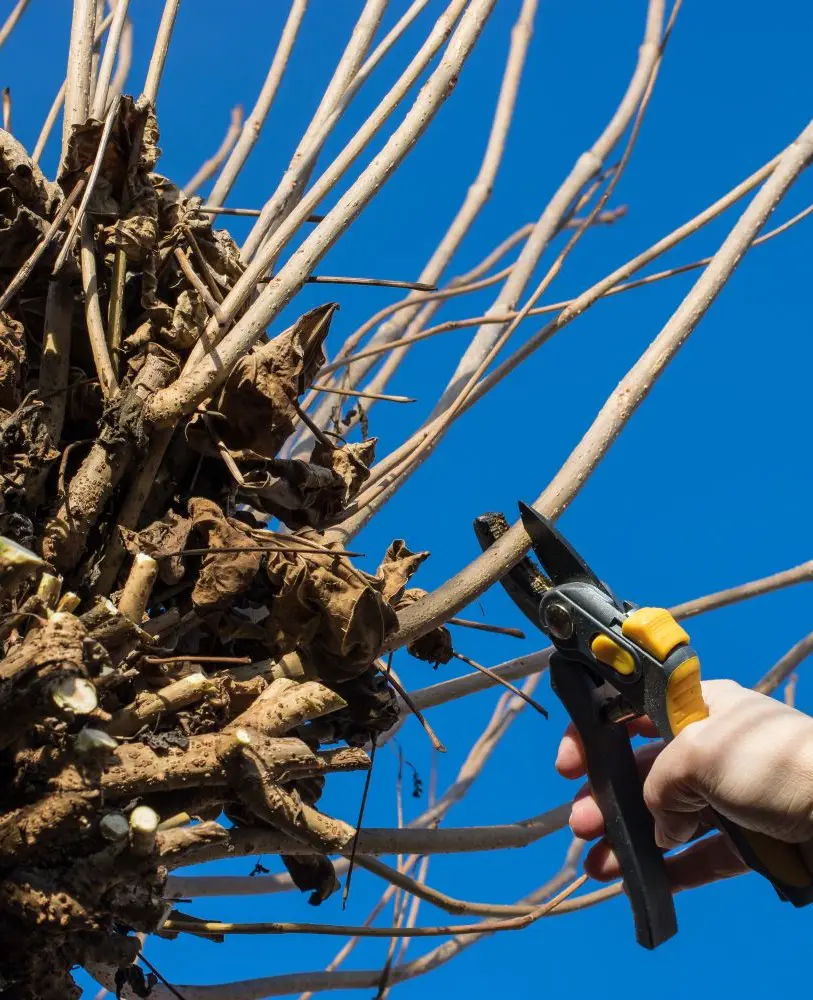
Seasonal Care
- Spring: Inspect for any winter damage and prune as necessary. Apply a balanced fertilizer if needed.
- Summer: Water during dry spells and monitor for pests and diseases. Mulch to retain moisture.
- Fall: Clean up fallen leaves and pods to prevent disease. Water deeply before the first frost to prepare the tree for winter.
- Winter: Protect young trees from harsh winter winds with burlap or tree wraps. Ensure the tree is well-hydrated before the ground freezes.
Propagation
Catalpa trees can be propagated through seeds, cuttings, or transplanting saplings:
- Seeds: Collect seeds from mature pods in the fall. Soak them in water for 24 hours before planting in a seed-starting mix. Keep the soil moist and place the container in a warm, sunny location. Transplant seedlings outdoors after the danger of frost has passed.
- Cuttings: Take softwood cuttings in late spring or early summer. Dip the cut end in rooting hormone and plant in a well-draining potting mix. Keep the soil moist and provide bright, indirect light until roots develop.
- Saplings: Transplant young trees in early spring or fall. Follow the same planting process as described for mature trees.
Benefits and Uses of Catalpa Trees
Ornamental Value
Catalpa trees are prized for their aesthetic appeal. Their large, lush leaves provide dense shade, making them excellent choices for parks, gardens, and residential landscapes. The showy white flowers create a stunning display in late spring, attracting pollinators such as bees and butterflies.
Environmental Benefits
- Wildlife Habitat: Catalpa trees provide habitat and food for various wildlife species. Birds, in particular, are attracted to the trees for nesting and feeding on the insects they harbor.
- Erosion Control: The extensive root system of Catalpa trees helps stabilize soil and prevent erosion, making them suitable for planting on slopes and riverbanks.
- Carbon Sequestration: Like all trees, Catalpas absorb carbon dioxide and release oxygen, contributing to improved air quality and climate change mitigation.
Practical Uses
- Timber: Catalpa wood is lightweight, durable, and resistant to rot, making it suitable for fence posts, furniture, and other outdoor applications.
- Medicinal Uses: Historically, parts of the Catalpa tree have been used in traditional medicine. The bark and roots were used to treat various ailments, although modern usage is rare.
- Fishing Bait: The Catalpa worm (larvae of the Catalpa Sphinx Moth) is highly prized by anglers as bait for fishing.
Troubleshooting Common Issues
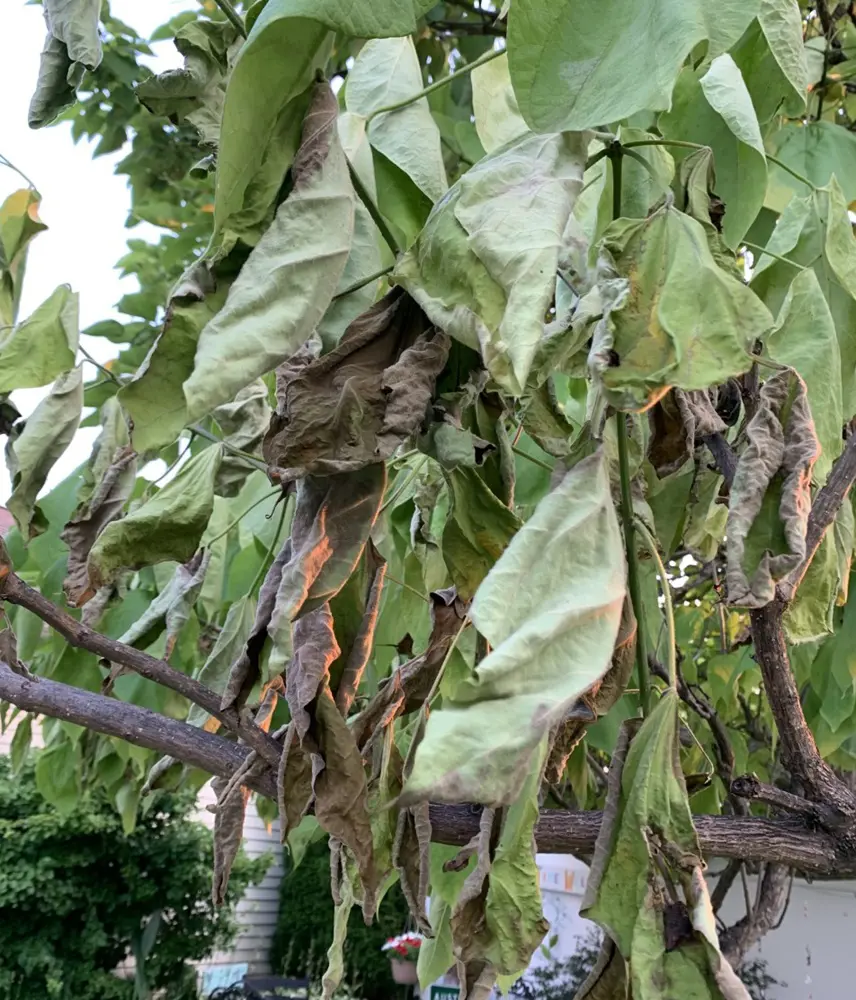
Yellowing Leaves
Yellowing leaves can be a sign of various issues, including:
- Overwatering or Poor Drainage: Ensure the soil is well-draining and adjust watering practices if necessary.
- Nutrient Deficiency: Apply a balanced fertilizer to replenish essential nutrients.
- Pest Infestation: Check for signs of pests and treat accordingly.
Poor Flowering
If your Catalpa tree is not flowering as expected:
- Age: Young trees may take several years to start flowering. Be patient as the tree matures.
- Light: Ensure the tree receives adequate sunlight. Catalpas prefer full sun for optimal blooming.
- Pruning: Avoid excessive pruning, especially during the flowering season, as it can reduce the number of blooms.
Leggy Growth
Leggy or sparse growth can occur due to:
- Insufficient Light: Ensure the tree is planted in a location with ample sunlight.
- Nutrient Imbalance: Apply a balanced fertilizer to support healthy growth.
- Crowding: Thin out crowded branches to improve air circulation and light penetration.
